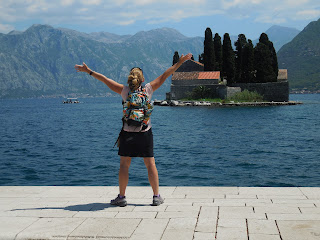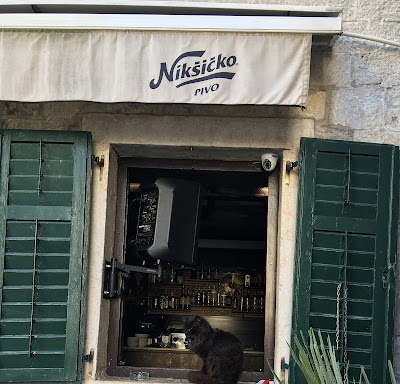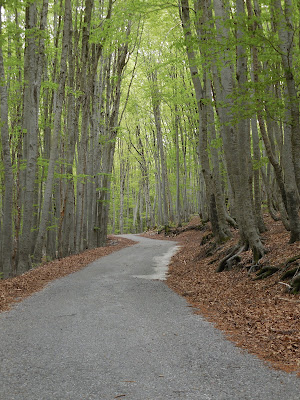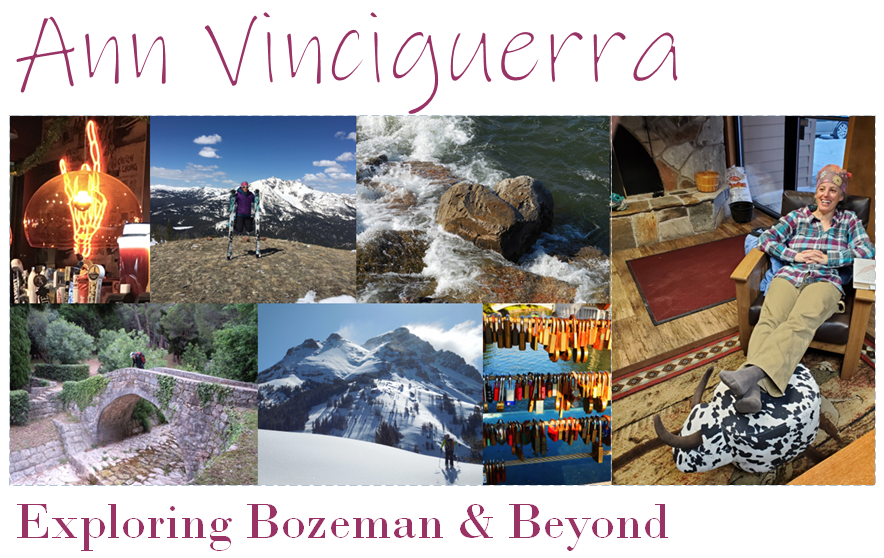Here's the write up on the second part of my trip. Once again, I challenged myself to tell the story using just ten photos.

~
There's not denying it. I am hooked on Montenegro. This was my fourth trip here since 2013, and I convinced my college buddy Jen to join me. I was excited to show her the land of wild beauty for the first time, and we got a lot done in our ten days there.
Kotor - We started off by spending three nights in Kotor. If you can only visit one place in Montenegro, make it Kotor. With its compact old walled town, numerous restaurants, bars, and shops, and mountains rising from all sides, this wonderful town on the bay offers plenty of sites and all of the amenities one needs when traveling.
Here, we climbed the city walls, strolled old town, bought produce at the farmer's market, ate, drank, pet stray cats, took a day trip to Perast, and reveled in the ambiance of this charming location. It was three days of beautiful weather, great sites, and interesting people watching.
 |
| Living her best life |
 |
| Spritz time Kotor |
 |
| Pivo and cats, Kotor classics |
Hiking from Kotor to Cetinje - Jen and I left Kotor with all of our gear on our backs. We knew some parts of our walk from Kotor to Cetinje would be along popular routes while others were a mystery. We started our trip by heading up the Ladder of Kotor. We left old town, crossed the Scurda River, and passed a number of ramshackle buildings, ordinary apartments, local feeling bakeries and restaurants, and an old hydroelectric plant. It was surprising how quickly Kotor transformed from a polished tourist town into everyday lived-in city.
Until Austrians built the nearby road in the late 19th century, the Ladder of Kotor was the only route connecting Kotor to Njeguši village and the inland region near Cetinje. Since the ladder was built to transport goods using pack animals, its 70 switchbacks rise in a steady rhythmic fashion and make for steep but very manageable walking.
Before we knew it, we were looming above the old town walls. Across the bay, Vrmac Ridge rose 785 meters (2,575 feet) above the sea dividing the bay into inner and outer sections. Further up the trail, one wide, open overlook presented stunning views and seemed to be the stopping point for many.
Upward we went. Jen and I continued on into the forest where the landscape changed from Cyprus trees and wild irises to a verdant forest. Although we could still see the bay, we were now on the inland side of the mountains and the landscape was noticeably different. Soon we were at Krstac Pass, 940 meters above sea level (3,083 feet) and four miles from our starting point. Restaurant Nevjesta Jadrana, right across from the entrance to Lovćen National Park, was a good spot for a cool drink before heading on to peaceful Njeguši for the night.
The next morning, day two of our adventure, it was on to Ivanova Korita (IK) in Lovćen National Park. Once again, Jen and I followed the red and white dots, which brought us through stony terrain, open fields, vacation homes, and one confluence of roads complete with souvenir stalls. We landed in IK where we spent two nights
 |
| On the way to Dolovi village, Montenegro |
Our walk began an old asphalt path/road behind the Ivanov Kanok Hotel. The walk as a lovely walk mix of forest and open views of the mountains with the path/old road taking us to the top of the quiet village. From here we followed a trail back to IK just as it began to rain.
Dolovi was filled with old stone houses in various states of repair. Some had receive a lot of attention but others were old and crumbling. As with many things in the Balkans, it is hard to know the state of a place so the status of these houses remains a mystery. Who owns them? What are they - country hideaways for the professional class or old family homesteads falling into ruin? How difficult is it to buy and remodel one of these places?
Day four of our walking adventure was from IK to Cetinje. The weather was iffy when we were in IK, and we weren't sure about the route to Cetinje, but Jen and I were determined to complete the tour on foot. We received information from a few hikers we ran across and were told of a good map app so we were prepared as we were going to be. Luckily, the route was along a (mostly) easy to follow trail and there were only a a few places where we walked along a road.
Mid-afternoon on this rainy day the mountains deposited us in the outskirts of town where we passed shops, houses, parks, cemeteries, and other signs of everyday life. I love moments such as this when you first arrive in a place and there is much anticipation for what you might discover. I really enjoyed seeing the many faces of Cetinje (City at the edge of the mountains, a place for locals, a lively old town with amenities for visitors, etc.) and making the journey here by foot offered the perfect pace to savor the experience.
Cetinje - Jen and I spent two nights here. Rain was expected to continue and we needed to wash clothes and regroup after our hiking days. With a population of 15,000, Cetinje is not a large place (Surprisingly, it is the seventh biggest town in Montenegro) but is home to several museums and a pedestrianized town center with shops, restaurants, and other services for visitors. It suited us perfectly.
One of the highlights of our stay was the Miodrag Dado Đurić Gallery, an offshoot of the Montenegrin Art Gallery. Housed in five story glass and concrete structure, the gallery, opened in 2012, features contemporary art. Admission is free and there is helpful (But not hovering) staff. Excellent views of town and the mountains can be seen from the top floor exhibit space.All Aligned, a digital design project by Serbian artist Uroš Krčadinac, was the featured exhibit. All Aligned uses an AI to design flags and raises questions about identity creation and its relationship to technology. A film about Nonument Group’s performance art piece From Nowhere to Noplace explored the ill fated Pioneer Railway that was constructed in Slovenia during Tito's rule. Those were two of the exhibits that stood out to me, but there was more on display. The gallery is just the right size to get drawn into the exhibits and engage with a cross-section of contemporary art without being overwhelming.
Budva - After Cetinje, Jen and I headed to Budva for one final night on the sea before heading to Podgorica for our onward flights.
Contrasts dominate in Budva. During our walk from the bus station to our room in old town we passed lots of construction sites and massive new developments, which was a stark contrast to the charming walled old town with its Venetian walls, narrow passageways, and marble streets.
After dropping our bags off in our old town lodging, Jen and I headed out for a stroll along Slovenska Obabla, the seaside promenade, and Slovenska Plaža, the adjoining beach. The outing was much longer than we expected as we made the 5+ km trek all the way to Bečići and Rafailovići.
Along the sea, docks were filled with boats of all sizes and restaurants ran the spectrum from elegant fish places to pirate themed watering holes. The Slovenska tourist village is a showpiece of old Yugoslav architecture and the squat old "Grand Bazar" building has seen better days but a new gleaming high rise towered above it. A few nightclubs were found along the route, some were junky, others abandoned (Including one with an outdoor pool), and others were in business. A nice seaside path through the trees near Bečići offered a touch of nature in the chaotic mix of seaside humanity. It was a wild cornucopia of tourists and locals, new and old, fancy and ramshackle with a touch of nostalgia for the Yugoslavian times.
We had dinner along the promenade and rounded out our night with a spritz (me) and a pivo (Jen) in old town. In the morning, before catching the noon bus to Podgorica, Jen and I visited Morgen beach with its looming cliffs pathway and twin coves.
Podgorica - We arrived in Podgorica, Montenegro's capital, on another rainy afternoon and stayed at Hotel Podgorica. If you're a fan of concrete Yugoslav architecture, be sure to check it out. Hotel Podgorica is conveniently located, has spacious rooms with huge balconies, a bar and restaurant, and an accommodating staff.
Jen and I were keen to visit the Duklja/Dolcea ruins, located only a few kilometers from town. It is possible to walk there as there's a signed route, but given the rain and our late arrival, we opted for a taxi.
 Duklja/Dolcea is on the tentative list of properties to be nominated for UNESCO world heritage status and is considered the most important archeological site in Montenegro. Situated on the wide flat plateau between Zeta and Morača Rivers, Duklja/Dolcea was named after the Illyrian tribe Docleati and was founded in the first century. During the Roman times it was a significant urban center in Montenegro.
Duklja/Dolcea is on the tentative list of properties to be nominated for UNESCO world heritage status and is considered the most important archeological site in Montenegro. Situated on the wide flat plateau between Zeta and Morača Rivers, Duklja/Dolcea was named after the Illyrian tribe Docleati and was founded in the first century. During the Roman times it was a significant urban center in Montenegro. Excavations began in the second half of the 19th century, and research continued after World War II. Artifacts found in the tombs (Now kept in the Museum of Podgorica) tell of wealth along with cultural, and trade relationships between Duklja/Doclea and the rest of the Roman empire. Remnants from the Roman era including temples, bridges, gates, and basilicas.
 |
| The Montenegrin army band & Yugoslavia's version of a Coca Cola |
~
Similar stories
More about wild beauty - http://annvinciguerra.blogspot.com/search/label/Montenegro
A fun game for the returning traveler - http://annvinciguerra.blogspot.com/2022/07/welcome-home-bingo-european-edition.html
And from further north in the Balkans - http://annvinciguerra.blogspot.com/2018/11/postcard-from-slovenia.html




No comments:
Post a Comment